Bord Bia held its annual Meat Markets seminar in Naas, Co Kildare last Friday. The seminar is the go to place for the industry to find out the facts and figures of all things meat in 2024 along with the challenges and opportunities in 2025 for the Irish meat sector.
While the conference got underway, back outside in the beef world base quotes were starting to hit €6/kg in what was a remarkable week for the beef trade so the conference was always going to be a positive one. And positive it was.
Shifting dynamics in the global beef trade have tilted the supply and demand curve in the beef farmers’ favour with nothing that can be seen at the moment to change things in the foreseeable future.
Notwithstanding the positivity, there are challenges and climate change and disease outbreaks were highlighted as challenges for the industry to overcome in 2025 by Bord Bia CEO Jim O’Toole at the seminar on Friday.

Mark Zeig speaking at the Bord Bia Meat Marketing Seminar
His comments come against the backdrop of a foot-and-mouth outbreak in Germany and bluetongue disease on the continent and in England.
“Consumers need enhanced reassurance as to the environmental and animal welfare credentials of the meat that they consume and we are well placed to provide that evidence,” O’Toole said.
He also highlighted the high cost of doing business as being a real threat to meat markets in 2025.
Energy costs and labour costs were the two factors which were mentioned as being the most important in terms of the meat industry, with labour becoming increasingly hard to find in the meat sector.
Positive year
It’s been a remarkably positive year for meat and meat exports with current indications that this positivity will continue into 2025 on the back of increased global demand and declining global meat production. O’Toole pointed to a very positive 2025 for the Irish meat sector.
Irish beef exports increased by 6% in 2024 with 47% of exports going to the UK and 46% going to the EU.

Donal Denvir speaking at the Bord Bia Meat Marketing Seminar.
He also outlined some of the challenges for the meat sector.
The presidency of Donald Trump was highlighted as a concern in relation to his pledges to introduce trade tariffs in his first day of office.
In terms of opportunities he pointed to the global population expected to rise to 8.5 billion people by 2030 with middle classes making up 1.7 billion of global consumers.
Government
Opening the conference Minister of State at the Department of Agriculture Martin Heydon commended Bord Bia for the work that they do in promoting Irish food on a global scale.
He also pointed to Irish meat an livestock producers who are constantly changing to meet consumer an market needs in a changing world.
Speaking on the formation and set up of the next government he said “business needs certainty, farmers need certainty and consumers need certainty and certainty is found in a strong and stable government which I believe we have with the current proposals for government.

Joe Burke from Bord Bia speaking at the Bord Bia Meat Marketing seminar in Naas last week.
“The agri-food sector will be protected and supported as part of that programme.”
Global outlook unpredictable due to amount of unknown factors
Rupert Claxton is a meat director with the global research agency Gira, specialising in global meat and livestock markets.
He spends a considerable amount of time analysing the evolving nature of international meat demand and the supply systems that provide it.
He had an interesting take on world meat supply and demand in 2025 and the factors that will affect it.
This year has started off with a lot of unknowns with animal disease, and bluetongue being one of those, as to how long it will last and what affect it will have on animal numbers in the countries affected.
He also pointed to Avian influenza and the affect that this might have on markets.
A foot and mouth disease outbreak could have implications for the UK pork markets, but it all depends on the rate of spread, and if the German authorities have the outbreak contained in Brandenburg.
You couldn’t have a talk on international beef markets without mentioning the Mercosur trade deal and Claxton had a different opinion to most in the room when it came to market impact in Europe.
“It’s going to take a little while for this deal to be ratified. It will be high end South American cuts primarily from Brazil,” he said.
“There’s a little bit of a price impact but the reality is that if you take that over five or 10 years Europe is going to be short of that 100,000 tonnes of beef anyway so the question is what that price is, but I think we have to manage the expectations and not get to transfixed.”
What affect will Donald Trump have on international trade in 2025?
While there has been lots of bluster around huge tariffs Claxton said it was a starting point for negotiations and that he expected more tariffs but at a lower level than first anticipated.
“China also forms part of the conversation and their move to reduce the level of imports coming into the country,” he added.
“They are about 70% self-sufficient in terms of beef at the moment.
“Any shift in exports from Australia to China could increase exports to the UK market so the knock on effects of what China does are real and will be felt by many.
“Drought in the USA continues to have a huge impact on beef price and a recovery is still 2-3 years away.
“Rising meat consumption across the world of 1.2% per year means more trade across the world.
“Chicken will drive this consumption with lower feed costs pointing to a lower price and increased growth.
“Tighter supplies of beef in 2024 held up prices and we can expect more of the same for much of 2025,” Claxton said.
The UK, our closest and largest single market is forecast to be down 5% in 2025.
Donal Denvir, who manages the UK Bord Bia office pointed to a positive 2024 and more of the same expected in 2025 with Irish beef still being the product of choice for filling the gap in the UK beef market.
Big reduction in kill in 2025
Bord Bia is estimating a drop of 87,000 head or almost 1,700 cattle per week in 2025. This is positive news for beef finishers, who are already reaping the rewards from reduced supplies in the first few weeks of 2025.
This reduction in supply is heavily weighted towards the first half of 2025, with supplies for quarter one back by 8% and supplies in quarter two back by 7%.
A 2% reduction is forecast for quarter three and quarter four is forecast to be back by 2%.
This all adds up to a 5% reduction in finished cattle supplies in 2025. The 2025 kill will see 64,000 fewer prime cattle killed, 8,000 fewer cows and 15,000 fewer other cattle killed. It was also positive news on the price front in 2024, with the average Irish R3 bullock price increasing by 61c/kg from January 2024 to December 2024. Live exports also performed very well, with 379,491 head exported in 2024, up 18% on the 2023 number.
Carcase weights
Declining carcase weights remain a huge challenge for the industry and Bord Bia’s Mark Zieg outlined some of these declines that have been taking place over the last few years.
Dairy-cross bullocks have reduced by 24kg over the last four years, while beef on dairy bullock carcase weights have reduced by 20kg over the last four years.
All categories of animals saw reductions in 2024, with the average bullock carcase weight dropping by 6.3kg – one of the largest drops in recent years. Heifer carcase weights reduced by 6kg in 2024.
An increasing proportion of the cattle supply coming from the dairy herd, and cows in particular in 2024, along with a difficult spring and summer in terms of grazing, all contributed to the lower weights in 2024.
An interesting point that was also highlighted is the fact that a lot of cattle destined for a spring 2025 finish were in fact killed forward in the back end of 2024 at younger ages and lighter carcase weights. Cattle grades are also reducing as a result of the increased kill of dairy-cross progeny.
Some 62% of the 2024 bullock kill graded an O or P, with a 1% decline in R grading bullocks in 2024.
Ex-director of international affairs with the EU Commission, John Alistair Clarke, made some interesting comments about the Mercosur trade deal. In his opinion Ireland should vote in favour of the Mercosur trade deal due to be ratified by member states later in 2025.
“Ireland should be smart about this one and in my opinion should repay back some of the loyalty that was shown to them by the EU during Brexit and vote in favour of the Mercosur trade deal,” he said.
He also pointed to numerous studies highlighting a minimal impact on the European beef market.
His comments didn’t go down well with his fellow panel members IFA president Francie Gorman and Meat Industry Ireland director Dale Crammond.
“This deal could decimate the European steak market for Ireland and for John to say that there is equivalent standards to Europe in Brazil is just wrong.
“The EU commissions own DG Health and Safety have reservations about the control mechanisms being put in place in Brazil to ensure meat exports are hormone free,” Gorman said.
Dale Crammond also voiced strong opposition to Clarke’s comments.
“Once the deal is fully phased in, Mercosur exporters will have additional market access of 99,000 tonnes and will be better off to the tune of €400m per annum.
“These impacts will be felt across the entire supply chain and are in addition to the well-publicised differences in production, sustainability and traceability standards between the EU and the Mercosur region.
“Not only would this €400m be a significant loss of tariff revenue for the European Commission, which could be used to part fund the next CAP, it will also have a very significant impact on the EU beef market.
“An analysis carried out by MII indicates that once the proposed agreement is fully phased in, the annual reduction in EU beef market output values will be approximately €1.3bn, with a disproportionate impact of an estimated €100-130m to the Irish beef sector because of its very high export-dependence on other EU markets.
“This equates to a loss of €75 to €95 per head based on our prime kill.”
GIRA’s Rupert Claxton also said that the Mercosur trade deal would have a minimal impact on the European beef market.
“Production is declining across Europe so the meat will have ot come from somewhere in the future and there is enough demand within the EU market to swallow the 99,000 tonnes up without any significant impact on markets.”
Bord Bia held its annual Meat Markets seminar in Naas, Co Kildare last Friday. The seminar is the go to place for the industry to find out the facts and figures of all things meat in 2024 along with the challenges and opportunities in 2025 for the Irish meat sector.
While the conference got underway, back outside in the beef world base quotes were starting to hit €6/kg in what was a remarkable week for the beef trade so the conference was always going to be a positive one. And positive it was.
Shifting dynamics in the global beef trade have tilted the supply and demand curve in the beef farmers’ favour with nothing that can be seen at the moment to change things in the foreseeable future.
Notwithstanding the positivity, there are challenges and climate change and disease outbreaks were highlighted as challenges for the industry to overcome in 2025 by Bord Bia CEO Jim O’Toole at the seminar on Friday.

Mark Zeig speaking at the Bord Bia Meat Marketing Seminar
His comments come against the backdrop of a foot-and-mouth outbreak in Germany and bluetongue disease on the continent and in England.
“Consumers need enhanced reassurance as to the environmental and animal welfare credentials of the meat that they consume and we are well placed to provide that evidence,” O’Toole said.
He also highlighted the high cost of doing business as being a real threat to meat markets in 2025.
Energy costs and labour costs were the two factors which were mentioned as being the most important in terms of the meat industry, with labour becoming increasingly hard to find in the meat sector.
Positive year
It’s been a remarkably positive year for meat and meat exports with current indications that this positivity will continue into 2025 on the back of increased global demand and declining global meat production. O’Toole pointed to a very positive 2025 for the Irish meat sector.
Irish beef exports increased by 6% in 2024 with 47% of exports going to the UK and 46% going to the EU.

Donal Denvir speaking at the Bord Bia Meat Marketing Seminar.
He also outlined some of the challenges for the meat sector.
The presidency of Donald Trump was highlighted as a concern in relation to his pledges to introduce trade tariffs in his first day of office.
In terms of opportunities he pointed to the global population expected to rise to 8.5 billion people by 2030 with middle classes making up 1.7 billion of global consumers.
Government
Opening the conference Minister of State at the Department of Agriculture Martin Heydon commended Bord Bia for the work that they do in promoting Irish food on a global scale.
He also pointed to Irish meat an livestock producers who are constantly changing to meet consumer an market needs in a changing world.
Speaking on the formation and set up of the next government he said “business needs certainty, farmers need certainty and consumers need certainty and certainty is found in a strong and stable government which I believe we have with the current proposals for government.

Joe Burke from Bord Bia speaking at the Bord Bia Meat Marketing seminar in Naas last week.
“The agri-food sector will be protected and supported as part of that programme.”
Global outlook unpredictable due to amount of unknown factors
Rupert Claxton is a meat director with the global research agency Gira, specialising in global meat and livestock markets.
He spends a considerable amount of time analysing the evolving nature of international meat demand and the supply systems that provide it.
He had an interesting take on world meat supply and demand in 2025 and the factors that will affect it.
This year has started off with a lot of unknowns with animal disease, and bluetongue being one of those, as to how long it will last and what affect it will have on animal numbers in the countries affected.
He also pointed to Avian influenza and the affect that this might have on markets.
A foot and mouth disease outbreak could have implications for the UK pork markets, but it all depends on the rate of spread, and if the German authorities have the outbreak contained in Brandenburg.
You couldn’t have a talk on international beef markets without mentioning the Mercosur trade deal and Claxton had a different opinion to most in the room when it came to market impact in Europe.
“It’s going to take a little while for this deal to be ratified. It will be high end South American cuts primarily from Brazil,” he said.
“There’s a little bit of a price impact but the reality is that if you take that over five or 10 years Europe is going to be short of that 100,000 tonnes of beef anyway so the question is what that price is, but I think we have to manage the expectations and not get to transfixed.”
What affect will Donald Trump have on international trade in 2025?
While there has been lots of bluster around huge tariffs Claxton said it was a starting point for negotiations and that he expected more tariffs but at a lower level than first anticipated.
“China also forms part of the conversation and their move to reduce the level of imports coming into the country,” he added.
“They are about 70% self-sufficient in terms of beef at the moment.
“Any shift in exports from Australia to China could increase exports to the UK market so the knock on effects of what China does are real and will be felt by many.
“Drought in the USA continues to have a huge impact on beef price and a recovery is still 2-3 years away.
“Rising meat consumption across the world of 1.2% per year means more trade across the world.
“Chicken will drive this consumption with lower feed costs pointing to a lower price and increased growth.
“Tighter supplies of beef in 2024 held up prices and we can expect more of the same for much of 2025,” Claxton said.
The UK, our closest and largest single market is forecast to be down 5% in 2025.
Donal Denvir, who manages the UK Bord Bia office pointed to a positive 2024 and more of the same expected in 2025 with Irish beef still being the product of choice for filling the gap in the UK beef market.
Big reduction in kill in 2025
Bord Bia is estimating a drop of 87,000 head or almost 1,700 cattle per week in 2025. This is positive news for beef finishers, who are already reaping the rewards from reduced supplies in the first few weeks of 2025.
This reduction in supply is heavily weighted towards the first half of 2025, with supplies for quarter one back by 8% and supplies in quarter two back by 7%.
A 2% reduction is forecast for quarter three and quarter four is forecast to be back by 2%.
This all adds up to a 5% reduction in finished cattle supplies in 2025. The 2025 kill will see 64,000 fewer prime cattle killed, 8,000 fewer cows and 15,000 fewer other cattle killed. It was also positive news on the price front in 2024, with the average Irish R3 bullock price increasing by 61c/kg from January 2024 to December 2024. Live exports also performed very well, with 379,491 head exported in 2024, up 18% on the 2023 number.
Carcase weights
Declining carcase weights remain a huge challenge for the industry and Bord Bia’s Mark Zieg outlined some of these declines that have been taking place over the last few years.
Dairy-cross bullocks have reduced by 24kg over the last four years, while beef on dairy bullock carcase weights have reduced by 20kg over the last four years.
All categories of animals saw reductions in 2024, with the average bullock carcase weight dropping by 6.3kg – one of the largest drops in recent years. Heifer carcase weights reduced by 6kg in 2024.
An increasing proportion of the cattle supply coming from the dairy herd, and cows in particular in 2024, along with a difficult spring and summer in terms of grazing, all contributed to the lower weights in 2024.
An interesting point that was also highlighted is the fact that a lot of cattle destined for a spring 2025 finish were in fact killed forward in the back end of 2024 at younger ages and lighter carcase weights. Cattle grades are also reducing as a result of the increased kill of dairy-cross progeny.
Some 62% of the 2024 bullock kill graded an O or P, with a 1% decline in R grading bullocks in 2024.
Ex-director of international affairs with the EU Commission, John Alistair Clarke, made some interesting comments about the Mercosur trade deal. In his opinion Ireland should vote in favour of the Mercosur trade deal due to be ratified by member states later in 2025.
“Ireland should be smart about this one and in my opinion should repay back some of the loyalty that was shown to them by the EU during Brexit and vote in favour of the Mercosur trade deal,” he said.
He also pointed to numerous studies highlighting a minimal impact on the European beef market.
His comments didn’t go down well with his fellow panel members IFA president Francie Gorman and Meat Industry Ireland director Dale Crammond.
“This deal could decimate the European steak market for Ireland and for John to say that there is equivalent standards to Europe in Brazil is just wrong.
“The EU commissions own DG Health and Safety have reservations about the control mechanisms being put in place in Brazil to ensure meat exports are hormone free,” Gorman said.
Dale Crammond also voiced strong opposition to Clarke’s comments.
“Once the deal is fully phased in, Mercosur exporters will have additional market access of 99,000 tonnes and will be better off to the tune of €400m per annum.
“These impacts will be felt across the entire supply chain and are in addition to the well-publicised differences in production, sustainability and traceability standards between the EU and the Mercosur region.
“Not only would this €400m be a significant loss of tariff revenue for the European Commission, which could be used to part fund the next CAP, it will also have a very significant impact on the EU beef market.
“An analysis carried out by MII indicates that once the proposed agreement is fully phased in, the annual reduction in EU beef market output values will be approximately €1.3bn, with a disproportionate impact of an estimated €100-130m to the Irish beef sector because of its very high export-dependence on other EU markets.
“This equates to a loss of €75 to €95 per head based on our prime kill.”
GIRA’s Rupert Claxton also said that the Mercosur trade deal would have a minimal impact on the European beef market.
“Production is declining across Europe so the meat will have ot come from somewhere in the future and there is enough demand within the EU market to swallow the 99,000 tonnes up without any significant impact on markets.”







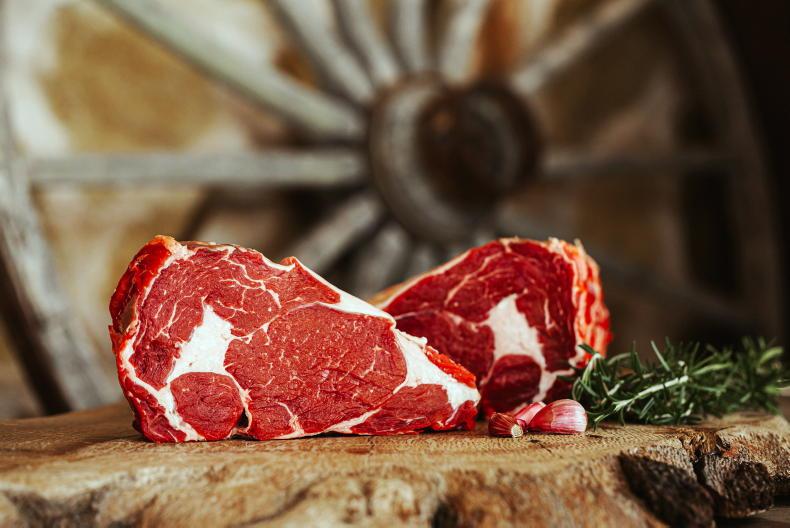
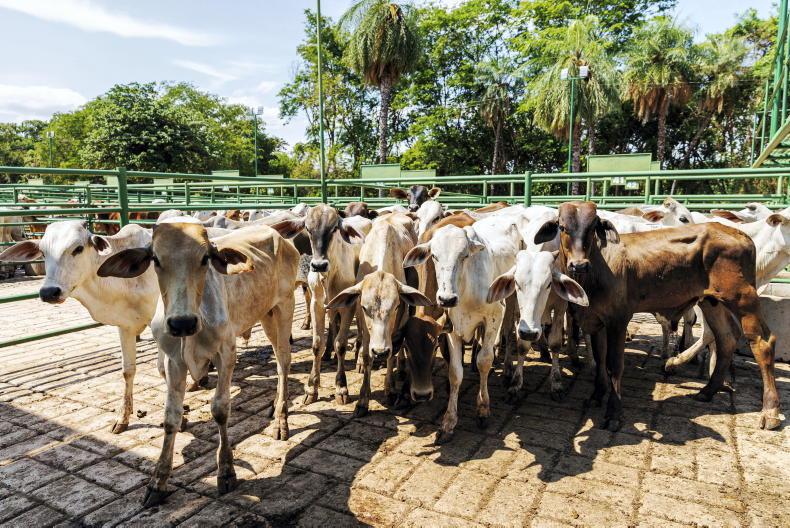

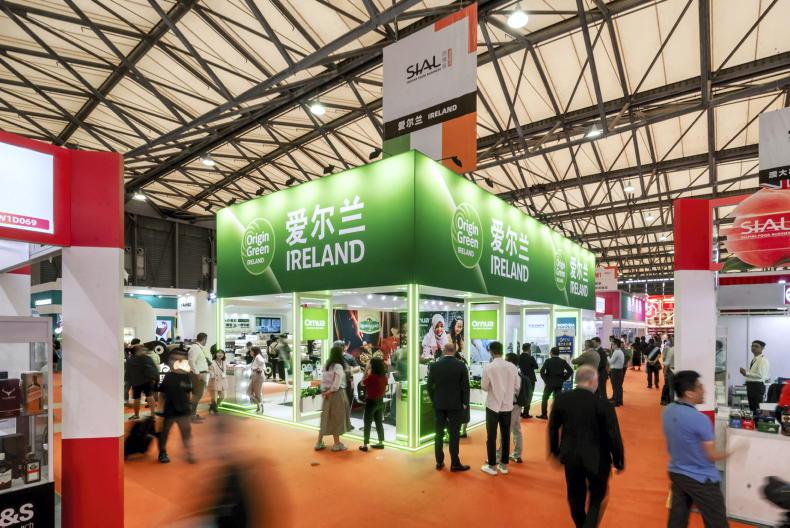
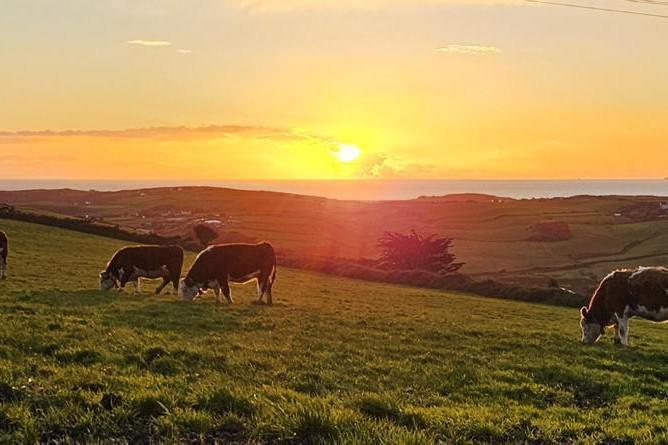
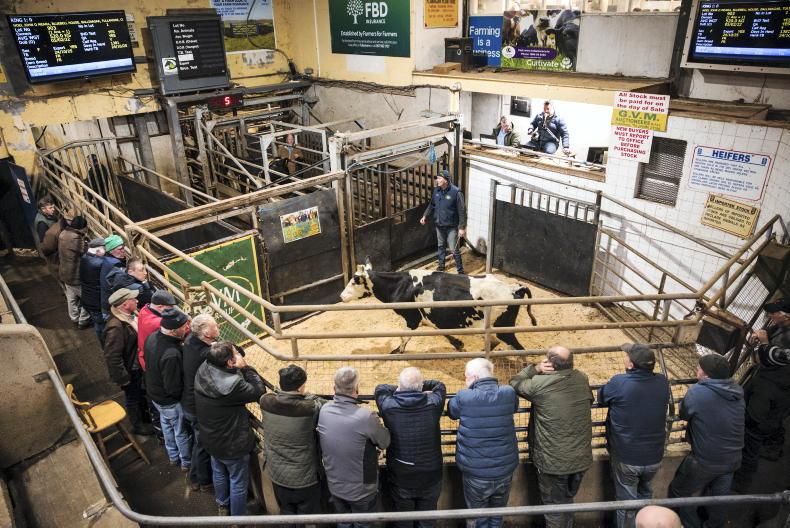
SHARING OPTIONS